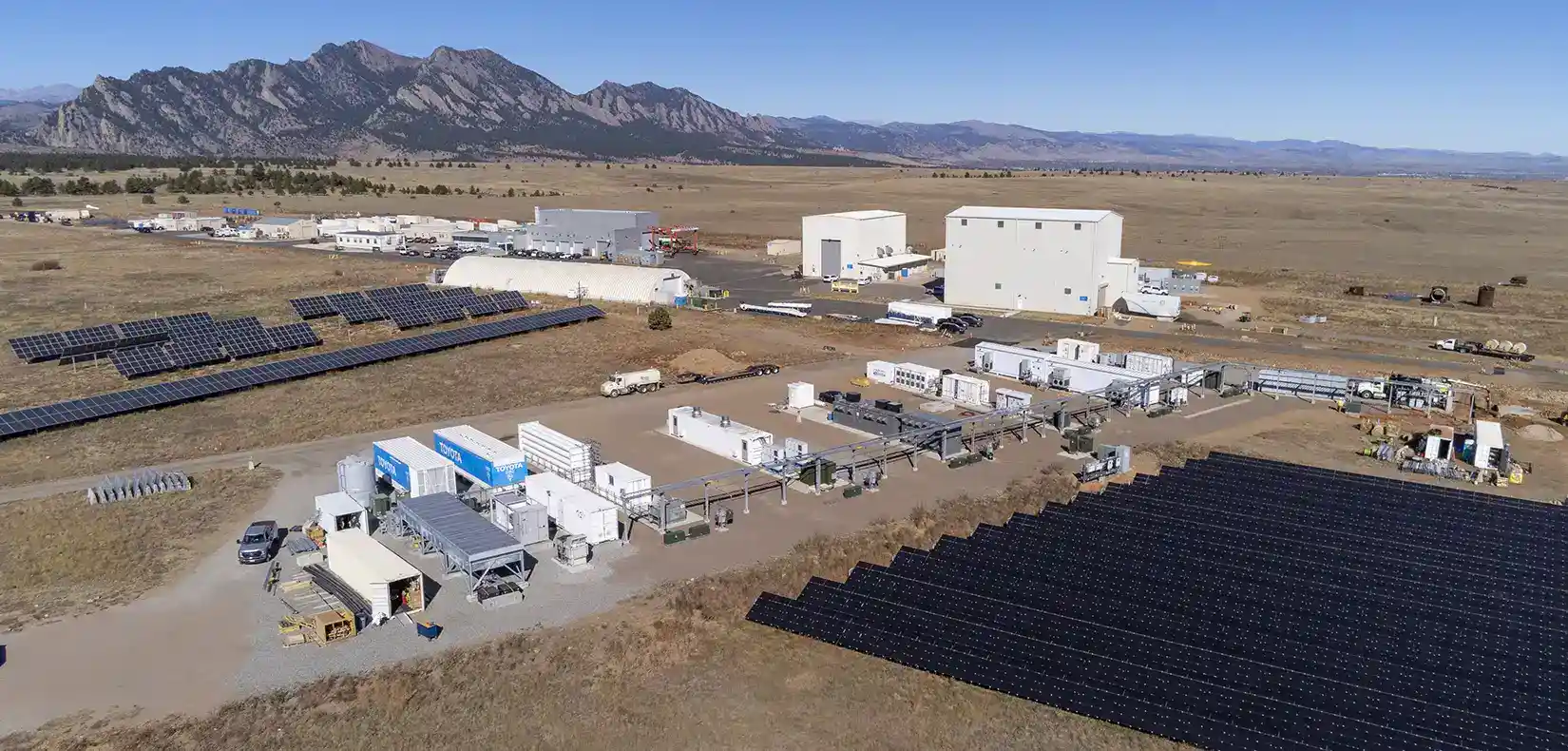Cybersecurity Analysis and Evaluation At-Scale
NLR uses expansive, high-fidelity research environments to scale cybersecurity solutions for large and complex energy systems.

Capabilities
High-Fidelity Modeling and Simulation at Scale With Hardware-in-the-Loop
NLR has the unique ability to model energy systems with a high degree of realism. Using megawatt-sized hardware and stacks of digital simulators and connection to commercial cloud infrastructure, researchers can build replica energy systems in the lab, while cyber connectivity across the hardware opens new opportunities for cyber-physical research and validation. This environment is named the Advanced Research on Integrated Energy Systems (ARIES) platform, and it has revolutionized how we study cybersecurity in advanced energy systems.
ARIES introduces low-risk pathways to study systems and system-of-systems in a lab as they truly are in the real world: complex, heterogenous, and interactive. It adds scale to hardware-in-the-loop research, so technology validations can occur within an ecosystem that resembles scenarios much closer to real deployment. The ARIES Cyber Range extends experiments to allow for digital twin research, large system emulations, and visualizations of cyber-physical effects among research assets.
Complex System Visualizations
Advanced visualization methods and high-performance computing make complexity intelligible at NLR. This capability is essential for operators to build an intuition of cybersecurity on their system, for researchers to elicit discoveries from complicated experiments, or for diverse stakeholders to understand how security decisions can impact systems. NLR researchers are continually innovating new methods for visualizing and interpreting cyber science.
Technology Assessments and Validations
Researchers and partners can fully assess the security and vulnerability of new energy technologies at NLR. The cyber-physical capabilities at NLR allow for drop-in testing of technologies to understand their response to a range of resilience and attack scenarios. NLR methods are effective at characterizing system vulnerabilities, mitigating cyber impacts and consequences, and simulating adversarial and disaster events in a closed and highly realistic research environment.
System-Scale Resilience
The ARIES Cyber Range enables the large-scale modeling of cyber-physical systems by coupling physics-based system models with communications and cybersecurity layers. Studying the cyber interactions of the evolving energy system—including more diverse grid edge components by orders of magnitude—makes the ARIES Cyber Range unique. This comprehensive system-of-systems assessment approach allows researchers to develop innovative, system-scale mitigation and response strategies.
Projects
NLR hosts the Critical Energy Cybersecurity AcceleratorTM, a collaborative technology accelerator program designed to achieve rapid innovations in cybersecurity for the energy sector. Participants have access to NLR's diverse cyber and physical assets to perform at-scale evaluations of their solutions in real operational environments. The Critical Energy Cybersecurity Accelerator has two tracks to accomplish this. Track 1 evaluates market-ready solutions to validate their capabilities to accelerate their adoption by electric utilities. Track 2 evaluates pre-market technologies and accelerates them on the path to market.
Subscribe to email updates to learn about current and future Critical Energy Cybersecurity Accelerator cohorts.
The accelerator is sponsored by the U.S. Department of Energy's Office of Cybersecurity, Energy Security, and Emergency Response.
CloudZero is an NLR effort to develop the infrastructure for validating commercial cloud environments. Cloud services are increasingly used to manage power systems, and this project allows users to evaluate cloud solutions with at-scale research assets on high-fidelity power systems.
The CloudZero testing environment can be used to investigate cloud infrastructure's latency, control mechanisms, multi-operator environments, market structures, and many other applications related to operating power transmission and distribution systems. CloudZero is essential to securing future systems that feature more data-infused devices from diverse providers.
Work With Us
Our technologies and laboratory capabilities support our partners in securing their own operations and developing the next innovations in cybersecurity. Learn more about how to work with us.
Contact
Share
Last Updated Dec. 6, 2025
